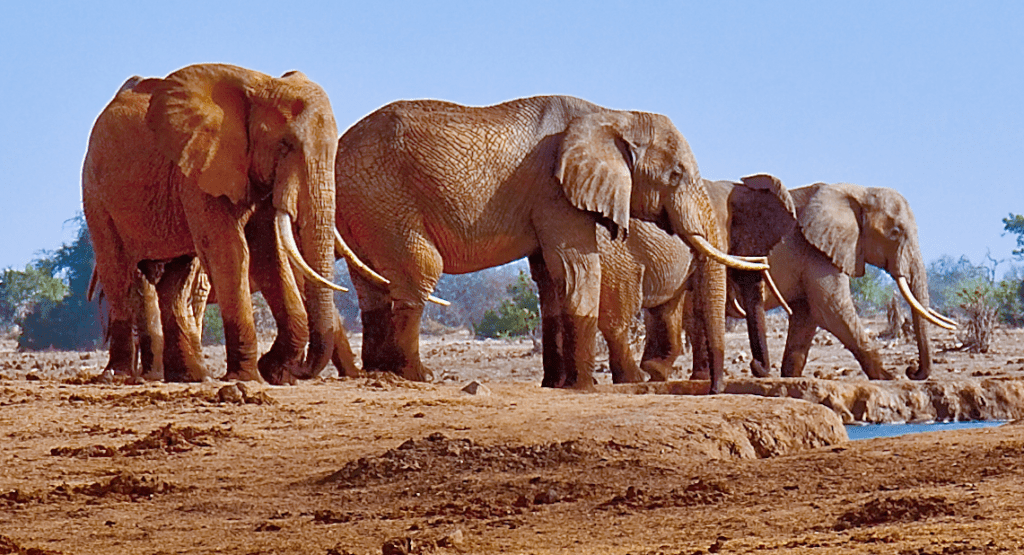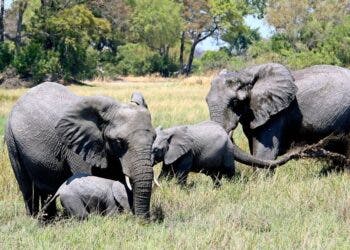Every year, some 30,000 African elephants (Loxodonta africana) are slaughtered by poachers throughout the continent. The elephants, some of the most intelligent creatures out there, are not oblivious and have adapted by drastically altering their foraging patterns.

Traditionally, African elephants are on the move looking for food during daytime and rest under the cover of darkness. The sudden uptick in poaching for ivory, however, has forced elephants to reverse the pattern.
Researchers at the University of Twente in the Netherlands in collaboration with NGO Save the Elephants tracked 60 elephants in northern Kenya with GPS devices for up to three years from 2002 to 2012. The animals were tracked as they foraged in and around the Laikipa-Samburu ecosystem, just three hours drive from Nairobi. One paper published in 2015, found poaching in Laikipia-Samburu increased heavily over this period, peaking at 70% of all recorded deaths in 2012.
It’s no wonder that the elephants have recognized the pattern of violence, seeing how most of their peers perished gunned down. After they compared elephant movement with poaching activity databases, the researchers found females reduced daytime activity by about 50 percent on average in high-danger zone compared to low-danger zones. In other words, nighttime movements of the elephants increased significantly in sync with poaching levels.
Forced lifestyle
Female elephants forage in close-knit families, often with calves at their side while the bulls are more solitary. Despite entrenched foraging strategies and mating patterns, African elephants have now been forced to change their way of life. By staying more active at night, they’ve now become vulnerable to nocturnal predators like hyenas or lions. Even so, human poachers seem to be a much bigger threat.
“As most poaching occurs during the daytime, their transition to nocturnal behavior appears to be a direct result of prevailing poaching levels,” Festus Ihwagi, a researcher at the University of Twente in the Netherlands, said.
This shift in foraging patterns might do the elephants good in the short-run but their long-term survivability is put into question. Elephants have evolved to forage during the daytime over the course of millions of years and it’s not very clear how this recent shift in response to poaching will affect their long-term adaptability.

Long-term survivability might matter very little in light of the massive uptick in poaching on the continent. Between 2010 and 2012 alone, some 100,000 African elephants were killed for their ivory, which is sold mostly on the Chinese black market. African elephants populations have declined by 30 percent between 2007 and 2014, according to a recent estimate.
Local governments with the help of many wildlife NGOs are trying to do something about it. Many elephant habitats have been declared national parks, and public ivory-destruction is performed frequently — the most recent in Kenya saw 7,000 tusks burned. Earlier this year, three rangers were killed and two were injured by poachers in Congo — one of many similar episodes happening in central Africa, and not only, where the fight against poaching can be fatal.
Corruption is the biggest threat to the elephants though. “High-level corruption and poor governance are helping enable sophisticated international trade,” said Paulinus Ngeh, director of Traffic in central Africa. And beyond poaching, which is indeed the most immediate threat, habitat loss and competition for food with humans are also helping drive the African elephants extinct.
“Poaching attracts a lot of media attention, but it’s only part of a big picture,” says Julian Blanc of the UN Environment Programme in Nairobi, Kenya. “If we somehow stopped poaching tomorrow, elephants would still be in big trouble.”





